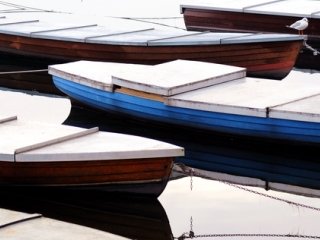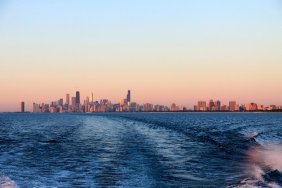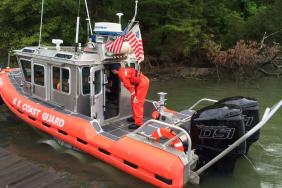 Here in Northern California, the first cold front of the season has rolled into town. The line of folks waiting at the gas station to fuel up their boat for one last taste of summer has died down to a line for coffee, and our life jackets are packed away in a far corner of the garage. However, when boating season is over, your job isn’t done when you pull your dinghy out of the water for the last time. Winterization is an integral part of boat maintenance to ensure that your vessel endures the rigors of colder temperatures and months of in-operation.
Here in Northern California, the first cold front of the season has rolled into town. The line of folks waiting at the gas station to fuel up their boat for one last taste of summer has died down to a line for coffee, and our life jackets are packed away in a far corner of the garage. However, when boating season is over, your job isn’t done when you pull your dinghy out of the water for the last time. Winterization is an integral part of boat maintenance to ensure that your vessel endures the rigors of colder temperatures and months of in-operation.
While winterization may seem as easy as dumping in some fuel stabilizer and tossing on a cover, it’s important to remember that the more effort you put in now; the less effort you’ll have to put in come May when you can’t figure out why your boat won’t start and there’s a weird crack in the hull. Grab a travel mug of coffee, your owner’s manual and let’s get started!
Ideally, boat winterization should be approached in a methodical method. Think about the way pilots go over their aircraft prior to a flight, and set about your winterization process in a similar fashion. Begin at the bow of the boat and move backward, taking on one task at a time.
1. Wash the boat with a good ol’ fashioned stream of pressurized water to remove any lake gunk or muck that’s accumulated over the summer.
2. Inspect the hull of your boat for any cracks, fractures, blisters or additional signs of wear and tear. Recognizing and repairing any incidental structure damage now will prevent water from freezing inside of cracks over the dreary winter months and causing additional damage. Not to mention, damage that requires professional repair can be found and repaired during the winter non-use season. Use the inspection time to also evict any mussels, barnacles or other creatures that have taken up residence on your boat’s exterior.
3. Depending on the type of boat that you captain, interior protection can be a major winter issue. While basic fishing boats may have a limited amount of vinyl seating, pleasure or ski vessels can feature more vinyl than your Aunt Sue’s 1976 living room set. Take the time to apply a vinyl protectant and repair any tears. Utilize a mildew spray to protect any carpeted areas of the boat and wipe any dirt from seating areas. The last thing you want is a boat interior that looks like last month’s leftovers when you head out the lake in Spring, so give your seating ample protection for the winter months.
4. Inspect your vessel’s motor for loose wiring, worn parts and prop damage before flushing the unit with fresh water to remove any debris from the system prior to storage. Now, it’s onto the fuel. Gas left sitting for as little as 15 days can begin to deteriorate in quality. Thus, fuel stabilizer is an important addition when you park your boat for the winter. After adding stabilizer to the main tank, idle the engine for 10 to 20 minutes to distribute throughout the system and avoid gunked up injectors come next year’s inaugural launch.
5. Cover your boat with a cover that fits properly and will effortlessly repel water, and support the weight of snow in colder climates. Tarp-style covers should be used with a frame to ensure that they can support the weight of winter weather. Meanwhile poly-vinyl and shrinkwrap covers typically provide the best protection from mold and mildew, while reducing the risk of cover damage from wind and harsh weather.
Taking the time to thoroughly prepare your watercraft for the winter season will ensure that you’ll be back on the water in spring; rather than trying to figure out why your boat smells like mold and won’t turn over. Nobody ever caught a fish in their driveway, so make sure that you’ll be back on the water in no time when the first heat wave hits next Spring.








